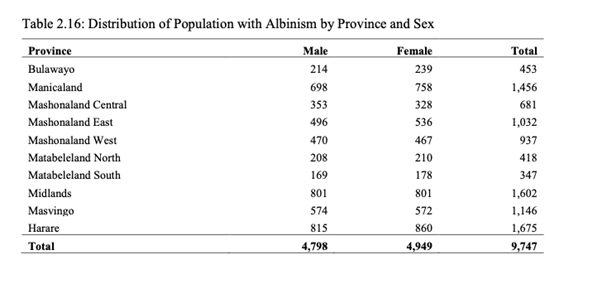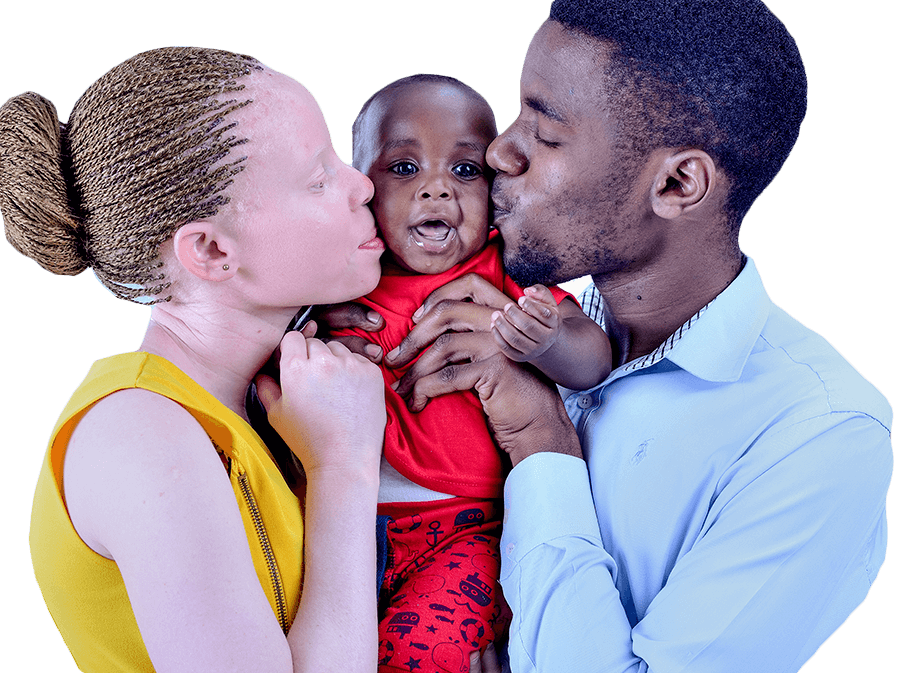Although Albinism affects many people around the world, the condition is often misunderstood and leads to a lot of stigma and discrimination.
Zimbabwe is no exception with an estimated 1:1000 people living with albinism, most of whom have endured challenges brought about by myths and superstitions associated with the condition. Through this factsheet ZimFact provides facts about albinism to help minimize misinformation and disinformation about it.
What is Albinism?
Albinism is a rare genetic condition that causes the lack of pigment in skin, hair, and eyes, sometimes accompanied by visual impairment. Different types of albinism are caused by various gene mutations.
How many Zimbabweans have albinism?
The number of Zimbabweans living with albinism is officially recorded at over 9,747 people according to the 2022 Population and Housing Census Report. Below is a breakdown of the statistics per province.

What causes albinism?
Albinism is a defect in one of several genes that produce or distribute melanin, the pigment that gives skin, eyes, and hair their coloring. The defect may result in the absence of melanin production or a reduced amount of melanin production.
Will albinism affect the children of people with albinism?
Children have a chance of being born with albinism if both of their parents have albinism or both of their parents carry the gene for albinism.
What are the types of albinism?
Different gene defects characterize the numerous types of albinism. Types of albinism include:
- Oculocutaneous albinism (OCA) – This is the most common type in Zimbabwe, affecting the skin, hair, and eyes, it has different variations (OCA-1, OCA-2, OCA-3).
- Ocular albinism – is the result of a gene mutation on the X chromosome and occurs almost exclusively in males. People with ocular albinism have reduced coloring in the retina and iris. The condition doesn’t affect the skin or hair.
- Hermansky-Pudlak Syndrome – is a rare form of albinism which occurs with lung, bowel, and bleeding disorders.
- Chediak-Higashi Syndrome – is another rare form of albinism that’s the result of a defect in the LYST gene. It produces symptoms similar to OCA, but it may not affect all areas of the skin. Hair is usually brown or blond with a silvery sheen. People with this syndrome have a defect in the white blood cells, increasing their risk of infections.
What are the symptoms of albinism?
People with albinism will have the following symptoms:
- An absence of color in the skin, hair, or eyes
- Lighter than normal coloring of the skin, hair, or eyes
- Patches of skin that have an absence of color
- Vision problems which include; sensitivity to light, strabimus (cross eyed), involuntary rapid eye movements, impaired vision or blindness)
How can albinism be managed?
There’s no cure for albinism. But management can help relieve symptoms and prevent sun damage, this may include:
- Sunglasses to protect the eyes from the sun’s ultraviolet (UV) rays
- Protective clothing and sunscreen with a high sun protection factor to protect the skin from UV rays
- Regular check-ups for skin cancer symptoms and medical treatment for skin cancer
- Prescription eyeglasses to correct vision problems
- Surgery on the muscles of the eyes to correct abnormal eye movements
Common myths about people with Albinism in Zimbabwe
| Myth | Stigma | Is the myth true or false? |
| Albinism is a curse that brings bad luck upon a family | Parents of babies with the condition are often encouraged to discard them | False |
| Giving birth to a baby with albinism is a sign of infidelity | Husbands leave their wives whilst children and women are shunned by community | False |
| Sleeping with a person with albinism can cure HIV/AIDS | People with albinism being kidnapped or raped. | False |
| Body parts of people with albinism can be used for ritual purposes | They are at risk of having their bodies mutilated. | False |
Sources
Zimbabwe 2022 National Population and Housing Census Report
United Nations
Zimbabwe Albino Association
https://www.healthline.com/health/albinism
https://www.nhs.uk/conditions/albinism
https://cmmb.org/living-with-albinism-in-zimbabwe/
Related content
Do you want to use our content? Click Here












